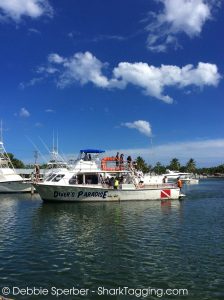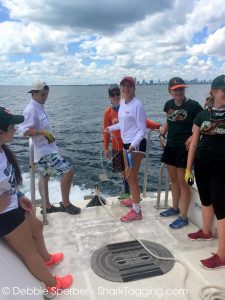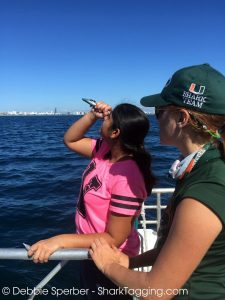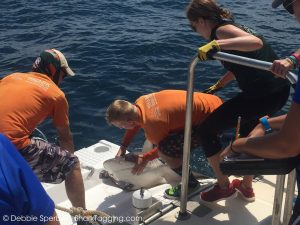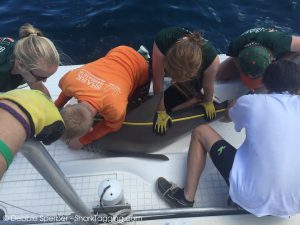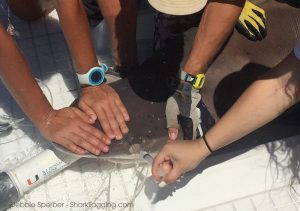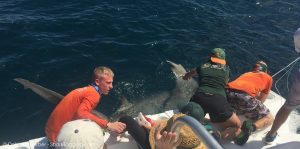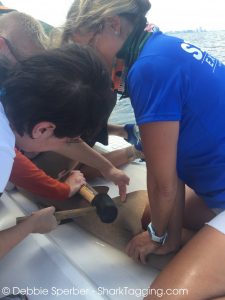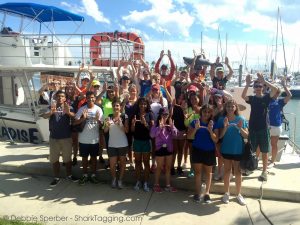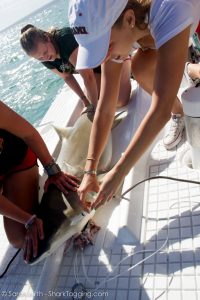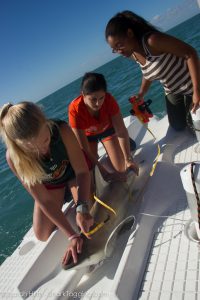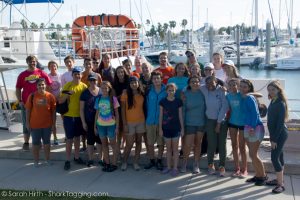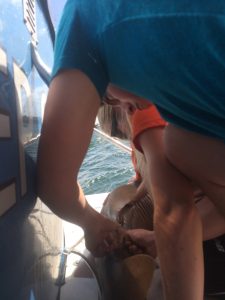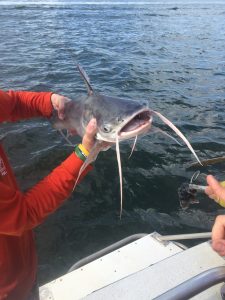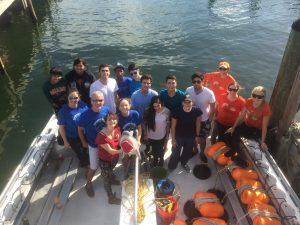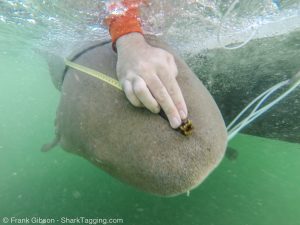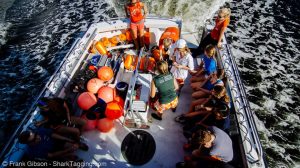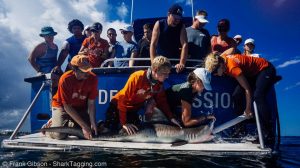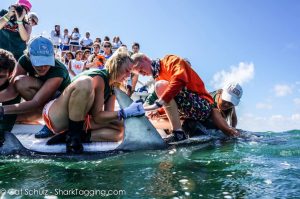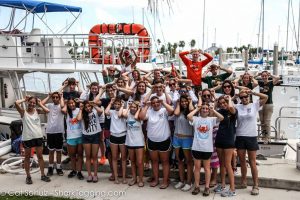Shark Tagging with Riviera High
By Rachel Skubel, RJD Intern
Last Sunday we had a fin-tastic trip with Riviera High, wherein we were fortunate enough to come across three unique species of sharks just a couple miles off of South Miami Beach – including a breathtaking 4-meter great hammerhead. This was our first secondary-school trip of fall 2015, and we were excited to get the students involved!
When we set off in the morning, conditions were perfect for fishing offshore in deeper waters. The water was relatively calm, and the current not too strong. This meant we were able to head ‘offshore’ into deeper waters – around 80-100 ft.
Riviera High were fantastic participants today, eager to jump in and help us to deploy the first series of ten drumlines.
During the 1-hour soak-time, we explained how we work up the sharks we manage to catch. The students are able to help us out with gathering a lot of this valuable data that goes toward the >10 projects our lab is working on. The students also helped us measure environmental data, namely temperature, dissolved oxygen, and salinity, which can help us study sharks’ preferred environments, and how their physiology might be affected by changing temperatures, for example.
The first 10 lines, and the next set after that, proved to be lamentably lacking in sharks. One can never lose hope, however, and we were treated to a beautiful sandbar shark on the very first drumline of set #3! These sharks are lovely intelligent animals, and always exciting to encounter and work with. The students helped us to take measurements and tag the shark before we released the animal back into the ocean.
As part of our workup, a stress-test is performed just before releasing the shark by spraying seawater into it’s eye to look for a ‘nictitating’ response – basically a protective eyelid that comes up, and lets us know that the sharks reflexes are operational:
Not long after this sandbar shark’s departure, the veritable highlight of the day arrived. After a tellingly tough-to-pull line, we were all amazed to see an amazing, massive great hammerhead shark at the surface. Our talented team secured the shark off the edge of the platform, and we were able to take measurements from this staggering individual.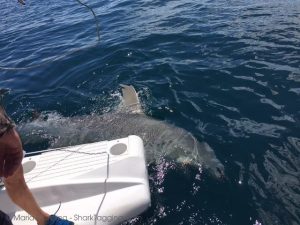
We estimated the length at 13 feet, or 4 meters, and as you can see, this individual had excellent condition (basically, fatter shark = better condition), so this was very encouraging to see! Even though great hammerheads are listed as Endangered by the International Union for the Conservation of Nature (IUCN), not much is known about why they go where they do, and how fishers can best avoid interacting with them, so the more we can learn the more we can learn to progress their protection.
Luckily for us, there was more to come in the shape of a very impressive nurse shark – this animal took a crack team of RJD team members to secure for the work up. This species is really quite effective at conserving energy by remaining rather placid until we take it on board for the work up. The nurse shark practices ‘bucchal pumping’ which means it can pump water over its gills without needing to move forward (like ‘ram ventilating’ shark species) – which also means we don’t need to put a pump its mouth while we measure, tag, and take samples.
At the end of this back-loaded day we were thrilled by the sharks we encountered, and very excited to have captured data from these magnificent animals. As the fall season progresses, it will be great to work with more fantastic groups, and learn more about the sharks in our area!

